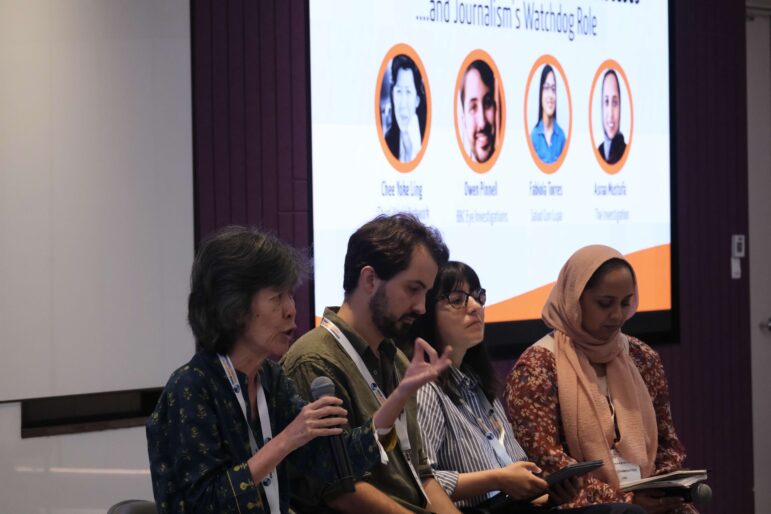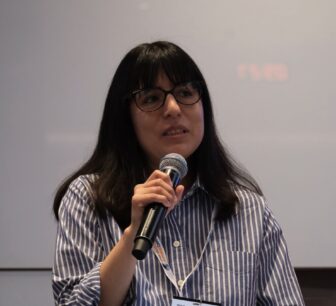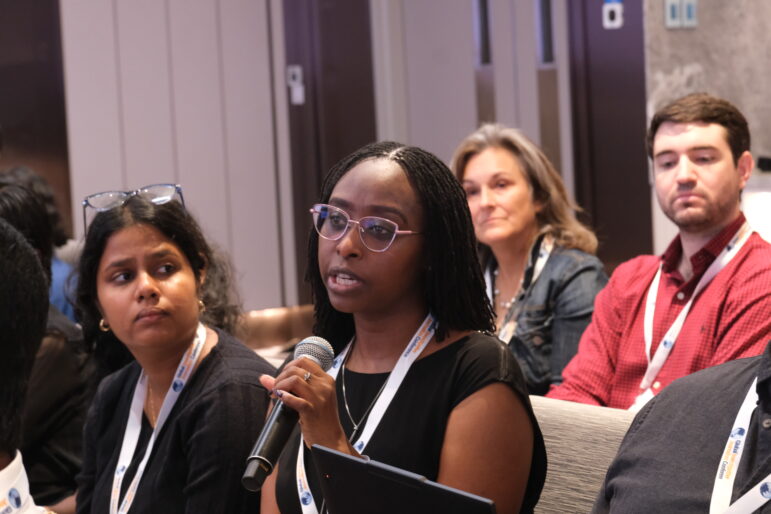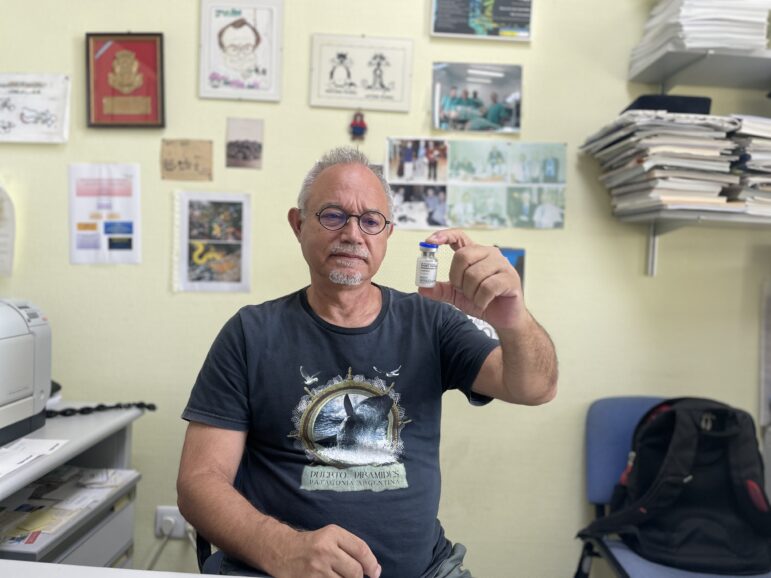

A GIJC25 panel hosted by The Examination focused on investigating corporations behind tobacco, alcohol, fossil fuels, and ultra-processed foods. Image: Alyaa Abdul Aziz Alhadjri for GIJN
Investigating Global Health: Impact from Corporations
Read this article in
Chronic diseases driven by tobacco, alcohol, ultra-processed foods, and fossil fuels claim millions of lives annually, yet remain underreported.
“One in every three deaths can be linked to just four industries,” said Asraa Mustufa, the managing editor of The Examination, a nonprofit investigative outlet focused on health, in a session that examined the quiet, decades-long crises caused by corporate products and policy influence.
Speaking at the 14th Global Investigative Journalism Conference in Malaysia, a panel of veteran health and environmental reporters and civil society representatives talked about these industries shape science, manipulate regulation, and deploy sophisticated public relations tactics to obscure harm. They also shared tools for getting inside corporate strategy, and for keeping investigations alive despite newsroom pressure.
Hidden Architecture of Corporate Power
Chee Yoke Ling, executive director of the nonprofit research and advocacy group Third World Network, emphasized that corporate influence rarely comes from a single company. Instead, reporters must follow webs of associations and trade groups. “Most of the time, you’re not dealing with one company. You’re dealing with associations, fronts, and funders who are too big and too coordinated to track casually.”
She noted that industry pressure has intensified over the past decade, especially in global health policymaking, where private foundations and industry-linked groups have gained extraordinary influence. Reporters, she stressed, need to “demystify the science and demystify the law” to hold these forces accountable and inform the public.
Capturing Science, Shaping Policy, Bending the Rules
Fabiola Torres, founder of the Peruvian investigative outlet Salud con Lupa, explained how harmful-product industries exert their power by:
- Capturing science: funding researchers, shaping studies, and buying credibility.
- Capturing policy: lobbying, pushing loopholes, and embedding industry allies in regulatory agencies.
- Rebranding harm: reframing deadly products as individual lifestyle choices or claiming “freedom of commercial interest.”
She urged journalists wanting to report on the biggest corporate killers to look into each one of those layers. “These stories require meticulous planning. They are not short-term beats. They take months, sometimes years,” she acknowledged.
Fossil Fuels, Greenwashing, and ‘Sacrifice Zones’
Owen Pinnel of BBC Eye Investigations focused on the fossil fuel sector, not only the main driver of global warming, but also the leading cause of air pollution, which the World Health Organization estimates causes 6.7 million premature deaths each year.
Pinnel highlighted a rapid proliferation of greenwashing over the past decade. Companies have increased advertising budgets to paint themselves as climate champions, and “cooked their ESG [environmental, social, governance] books” by offloading their dirtiest assets into shell companies so that their emissions would not count as ‘theirs.’
Reporters should treat these claims with skepticism, he said.
“Look closely at what they call ‘solutions.’ Carbon capture devices on luxury buildings in UAE, glossy ESG claims, or offsets that don’t add up,” he cautioned.
He also urged journalists to look at “sacrifice zones,” communities bearing the toxic burden of fossil fuel production. “There’s so much to expose,” he said, pointing to his work in Iraq, but noting that such zones exist on every continent.
Challenge of Reporting on Slow-Burn Impacts
A major theme of the panel discussion was the mismatch between newsroom cycles and slow-burn crises. Chronic disease develops over decades. Corporate strategies evolve over years. Legislation takes even longer. Meanwhile, newsrooms operate on daily deadlines.
“These stories compete with the immediate disasters of the day. One of the main challenges can be getting the attention of the editors who deal with the immediacy of the deaths in war zones, and sometimes don’t see this kind of reporting as urgent, even though they kill far more people,” said Pinnel.
Torres described her strategy for keeping these stories alive: publishing investigations alongside radio programs, videos, school materials, and public-health workshops to ensure “the story doesn’t just disappear after one day.”
Getting ‘Inside the Company’
Asraa Mustufa offered practical investigative techniques that have worked for The Examination, which has partnered on more than 270 stories with 70 outlets. “A mantra we’ve developed at The Examination is to try to get inside the company or try to get to the company in their world. Especially when they talk about these strategies that are having disproportionate health impacts.”
“How do you do that?” she asked. “It sounds really hard but one of the most obvious ways is just to go where they are. Go to their natural habitats. Those are conferences they attend, or better, the ones they are sponsoring. Their investor board meetings. But also, parliamentary disclosures. Industry document library. University researchers.”
And she urged journalists not to lose sight of one of the most important aspects of journalism “cultivating sources who used to work there, or who still work there but who are not happy.”
The greatest insight often comes from companies “in their own words,” she said, in speeches, filings, and investor pitches that reveal strategies long before the public sees their impact.
“The bottom line is who’s making bank off the health information you’re seeing?” she said, reminding journalists not to lose sight of the money question.
It was a reminder that behind slow-moving crises, shifting narratives, and manufactured doubts, someone is profiting, and that’s where the investigative trail begins.











